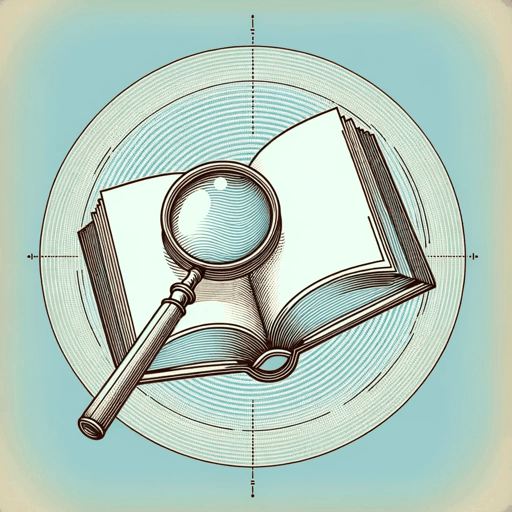64 pages • 2 hours read
Francis BaconNovum Organum
Nonfiction | Book | Adult | Published in 1620A modern alternative to SparkNotes and CliffsNotes, SuperSummary offers high-quality Study Guides with detailed chapter summaries and analysis of major themes, characters, and more.
Summary and Study Guide
Overview
Novum Organum is an epistemological tract written by Francis Bacon, an early modern statesman and polymath. It was published in 1620 and written in Latin. Its full title is Novum Organum, sive Indicia Vera de Interpretatione Naturae, meaning “New Organon, or true suggestions for the interpretation of nature.” Novum Organum was intended to be the second part of a larger work—the Instauratio Magna, or “Great Instauration,” Bacon’s proposal for an overhaul and new birth of science and philosophy. Novum Organum is the only part to have been properly completed and is therefore the central focus for any examination of Bacon’s ideas. Today, it is sometimes referenced when the entire project is meant.
Bacon is credited as a major figure in the Scientific Revolution, a period of enormous innovation in scientific thought during the 16th and 17th centuries. Though his specific method did not flourish in a significant or long-lasting way, the principles of his approach, such as evidence-based thinking and careful methodology, influenced the emergence of science as a distinct discipline, leading to the development of current scientific methodology.
This study guide uses the e-book available at The Online Library of Liberty, published in 1902 and edited by 19th-century editor Joseph Devey (including his footnotes).
Summary
Bacon’s Novum Organum is divided into two books, with a preface at the beginning that introduces the work. Here, Bacon touches on his major themes and explicitly describes Novum Organum’s purpose. He criticizes existing epistemological culture and its roots in ancient Greek philosophy—in particular, Aristotle. He explains that he is proposing an entirely new approach based on induction to replace the overly abstract and circular dependence on logic; this work will function as a guide for using his approach—a “mechanical aid.” He lays the ground for his thesis, offering the caveat that he is not trying to totally destroy existing systems but rather relegate them to the uses they suit, and warns that his work is complicated, so any reader should ensure they have fully understood it before they offer a rebuttal.
The two books that follow are organized into a series of “aphorisms,” or statements summarizing an observation or principle. Bacon offers a fresh point, piece of evidence, or topic in each aphorism, which function similarly to bullet points in a modern text. In this way he gradually builds arguments or explanations. Although Bacon’s main themes are interconnected, and threaded throughout the entire work, Bacon moves through his ideas methodically, so the text can be divided up into thematic sections.
Book 1 is largely discursive and rhetorical, presenting a series of arguments that address the reasoning behind seeking a new approach. It opens with an introductory section, which like the Preface offers broad engagement with Bacon’s main themes. He introduces his idea of the connection between knowledge and power and develops his criticism of logic-based approaches, attacking syllogism specifically. He divides scientific study into two approaches—the current one, in which ideas are retrospectively imposed onto observations of nature, and his proposal, in which ideas arise from interpreting nature. This furnishes the work’s subtitle: “true suggestions for the interpretation of nature.”
The rest of Book 1 covers two main topics: arguments against existing epistemology and arguments endorsing Bacon’s own proposals. His arguments against existing epistemology start with an examination of the types of error and bias that people fall in to, which he calls “idols,” in Aphorisms 38-65. As a continuation of the final idol, he examines the faulty subjects that people are drawn to studying in Aphorisms 66-68. He then briefly considers “demonstrations”—the processes through which scholars seek to prove their ideas. In Aphorisms 71-77, he presents a compilation of observations that he says are evidence for the poor state of current epistemology. Finally, Aphorisms 78-92 present a list of the causes of error in scientific and philosophical culture and structure. These sections make up Bacon’s deconstruction of current epistemology.
The causes of errors also play a role in his next major topic: arguments in favor of continuing to pursue progress and the suitability (or even necessity) of using his method to do so. That is because identifying the causes in this way, he believes, enables them to be addressed. In Aphorisms 93-114, he presents a list of reasons to hope for future progress, which also serve as arguments that using his method will result in such progress. From Aphorism 115, Bacon continues to endorse his own system by refuting anticipated counterarguments and managing expectations regarding his proposals; he cautions, for example, that his system will take a lot of work and does not promise to solve everything all at once. He concludes Book 1 by presenting some arguments as to why the achievements his method promises are so important to humanity, advocating for the value of progress.
Book 2 is primarily concerned with laying out Bacon’s proposed method so that others might follow it. He uses the example of heat, examining it according the method he is proposing.
In the first 20 aphorisms of Book 2, Bacon draws up a number of tables presenting information about the nature of heat. The first three present observations about heat: instances in which heat is present, instances where it is absent, and instances where the heat varies. The next table draws conclusions from the first three, listing phenomena or things that Bacon says cannot be fundamentally linked to heat, as they are not always found when heat is, or vice versa. From this, Bacon takes what remains (motion) and concludes that this is fundamentally connected to heat. His next table or list narrows down the types of motion associated with heat, detailing specific qualities that heat-related motion has.
Bacon then provides several other pointers regarding correctly using his method to draw conclusions. The first of these is a list of “prerogative instances”: illuminating phenomena and ways to categorize them. He spends the remainder of Book 2 listing and explaining these instances. He then states his intention to explain the other pointers in upcoming work. Finally, he restates the value of his approach and the progress it will offer, concluding by asserting that it is also religiously sound.


